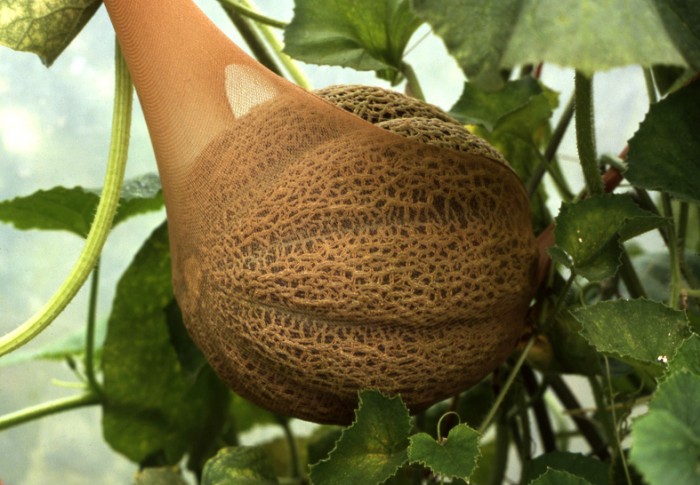Few crops so require a greenhouse as melons. True seedsmen do sell varieties that may in a very good summer crop outdoors, but most years the results are rather disappointing. Come under cover though and truly amazing melons can be had of a size, sweetness and aroma far exceeding any sold commercially. The main reason for this is you can ripen your fruits on the vine until the day they drop off and that’s when they are fully at their best. Thus as the plants climb swelling melons are usually held suspended in nylon stockings, nets or cloth bags well before then.

A huge range of heritage varieties is delightful to explore with green, red, white and orange flesh in rinds of all descriptions. But start with one of the modern Gallia/ Ogen strains for sheer reliability. Germinate the seed in warmth singly in small pots and grow on in humid warmth regularly potting up into rich compost. Always pot leaving the plant standing proud on a small mound as if the neck gets wet where it enters the compost it will rot!
Melons can be cropped in small-bucket sized containers doing better still with larger ones, and even more so if kept constantly moist and regularly given liquid feed. Bottom heat gives even more spectacular results and really huge melons can be grown in a layer of compost piled on top a hot bed of fermenting manure.
One important tip is to ignore book references to nipping out the growing point after four leaves have formed etc. This misleading instruction was to produce four laterals, once these threw flowers you were to pollinate four, one on each lateral, on the same day so as to acquire four equal sized melons. Now if you were selling melons this might be sensible. But if you ignore this advice then a melon or more will set anyway with mixed results. I advise removing all bar the best one anyway. Leave but one and this swells enormously and has more flesh for eating as it wastes less resources on skin and pips than would four smaller ones.
All the time grow them in full light and keep the atmosphere warm and humid as this will deter their biggest problem, red spider mite, which speckles then bleaches the leaves. This requires control and if spotted the simplest cure is to introduce the commercially available predator Phytoseulis persimilis. Melons can be allowed to ramble over the border soil but are better trained up strings as then they are exposed to more sunlight which makes for bigger sweeter fruits. Oh and one final tip- when your first fruit drops into it’s net do not eat it straight away. Chill your melon first then allow it to warm up to near room temperature before eating or it’s aroma could be almost over-powering.


